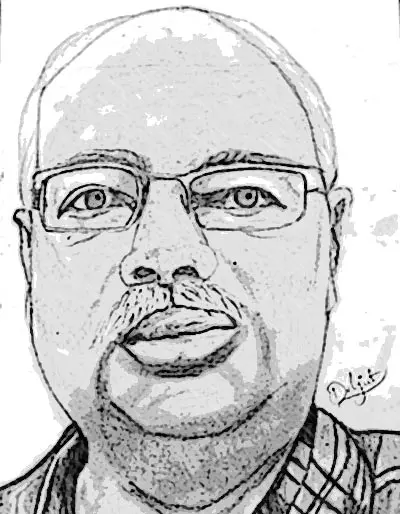How the motions moved past PMs

Deputy Leader of Congress in the Lok Sabha Gaurav Gogoi speaks during a debate on no-confidence motion, during the Monsoon session of Parliament, in New Delhi on Tuesday. (R) Kiren Rijiju
- Cong questions PM's silence on violence
- Seeks immediate resignation of Manipur CM
- Ministers, BJP MPs mount strong defence
- Target Rahul after he opts out of debate
Hyderabad: The Manipur issue rocked the Parliament since day one of the monsoon session which began on July 20 over no-confidence motion. The opposition and the government could not take it up for about 18 days though there were many options available. No-confidence motion is a mechanism to test collective responsibility. Under the rules any Lok Sabha MP, who can garner the support of 50 MPs can at any point of time, introduce the no-confidence motion against the government.
Thereafter, a discussion on the motion takes place and the Prime Minister replies. MPs who support the motion highlight the government’s shortcomings. Finally, a vote takes place – in case the motion carries, the government falls. There have been many occasions when the opposition used this option to force a discussion knowing well that it does not have the numbers to pull down the government.
The first no-confidence motion was moved in 1963 by Acharya J B Kripalani against the Jawaharlal Nehru government immediately after the disastrous India China War the opposing prime minister’s China policy. The motion was supported by 44 members and when it was put to vote, 62 voted in favour while 347 MPs voted against it.
Indira Gandhi, the ‘Iron lady of Indian Politics,’ faced 15 no-confidence motions in her 16-year tenure. This was the highest number of motions faced by any prime minister so far.
The importance of the no-confidence motion can be gauged from the fact that in the sixth Lok Sabha, the Janata Party government led by Morarji Desai faced two no-confidence motions. While he won the first with an overwhelming majority, the government fell when the second motion was moved by Y B Chavan (Congress-I) on July 11, 1979. Desai resigned even as the discussion was inconclusive.
Lal Bahadur Shastri and PV Narasimha Rao faced three no-confidence motions each while Atal Bihari Vajpayee faced two motions and Rajiv Gandhi faced one.
The motion against Vajpayee was moved by Sonia Gandhi in 2003. It was defeated by a margin of 125 votes. Vajpayee had two short stints as PM. One in 1996 and again from 1988-99
Rao faced three no-confidence motions and defeated all of them. But the third one faced by his government was mired in controversy. Rao won the 1993 no-confidence motion moved by CPI(M) MP Ajoy Mukhopadhyay with a narrow margin- 251 against and 265 in favour.
Prime Minister Charan Singh, VP Singh, Chandra Shekhar, HD Deve Gowda and IK Gujral did not face any such motion.
But Deve Gowda’s 13-party United Front government collapsed after being in power for 10 months as he lost vote of confidence in Lok Sabha as Congress withdrew support. He got only 158 votes in 545-member LS.Vajpayee had moved three motions of confidence, trying to prove his majority in the House. He lost the third one in April 1999 by just one vote – which resulted in the premature dissolution of the 12th Lok Sabha.
The present no-confidence motion moved by the Congress will be the second one faced by Modi in his nine-year tenure. The first one in 2018 was moved by TDP and was defeated by 199 votes.














